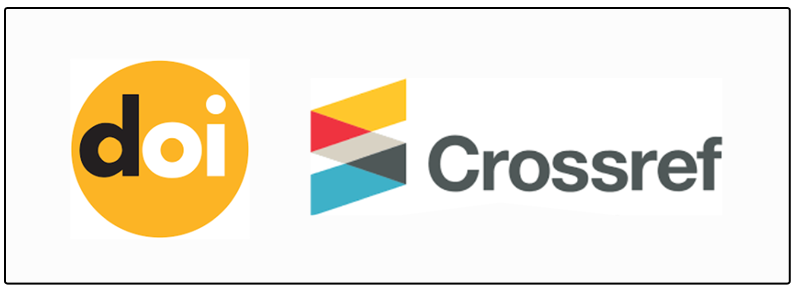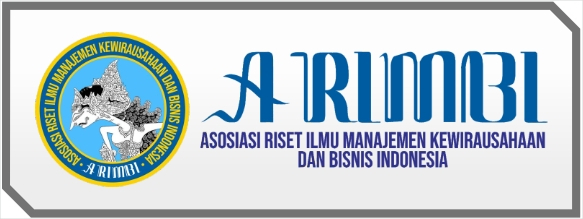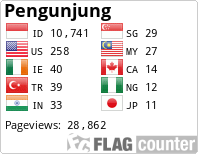PENGARUH BRAND LOVE, PERAN SELF-ESTEEM, DAN SOCIAL INFLUENCES TERHADAP BRAND LOYALTY: STUDI PADA PENGGUNA PRODUK FASHION LOKAL DI INDONESIA
DOI:
https://doi.org/10.55606/jebaku.v2i3.612Keywords:
Brand love, Brand loyalty, Self-Esteem, Susceptibility to normative influence, Social InfluencesAbstract
This study aims to examine whether brand love has an influence on brand loyalty, and whether Self-Esteem and Social Influences (susceptibility to normative influence) have a role in the influence of brand love on brand loyalty on users of Local Fashion Products in Indonesia. This study used a descriptive analysis using a data collection method with Google Form which was carried out on 150 respondents who met the predetermined criteria. Processing the data is then done using SmartPLS 3.3. The results of this study show that brand love has a significant influence on brand loyalty. Then brand love also has an influence on Self-Esteem and susceptibility to normative influence, and Self-Esteem and susceptibility to normative influence have been shown to affect brand loyalty.
References
Andrea, M. (2019, July 14). Gairah Industri Fashion Indonesia. Https://Www.Cnbcindonesia.Com/. https://www.cnbcindonesia.com/lifestyle/20190712155341-35-84555/gairah-industri-fashion-indonesia
Albert, N. and Merunka, D. (2013), "The role of brand love in consumer‐brand relationships", Journal of Consumer Marketing, Vol. 30 No. 3, pp. 258-266. https://doi.org/10.1108/07363761311328928.
Albert, N., Merunka, D., & Valette-Florence, P. (2008). When consumers love their brands- Exploring the concept and its dimensions. Journal of Business Research, 61(10), 1062–1075. https://doi.org/10.1016/j.jbusres.2007.09.014
Algesheimer, R., Dholakia, U. M., & Herrmann, A. (2005). The Social Influence of Brand Community: Evidence from European Car Clubs. Journal of Marketing, 69(3), 19–34. http://www.jstor.org/stable/30162054.
Alicia D. Cast, Peter J. Burke, A Theory of Self-Esteem, Social Forces, Volume 80, Issue 3, March 2002, Pages 1041–1068, https://doi.org/10.1353/sof.2002.0003.
Arndt, J., & Greenberg, J. (1999). The effects of a self-esteem boost and mortality salience on responses to boost relevant and irrelevant worldview threats. Personality and Social Psychology Bulletin, 25(11), 1331–1341. https://doi.org/10.1177/0146167299259001.
Badrinarayanan, V. and Sierra, J.J. (2018), "Inferred social approval and brand tribalism: a tale of two communities", Journal of Product & Brand Management, Vol. 27 No. 4, pp. 363-374. https://doi.org/10.1108/JPBM-10-2017-1597.
Bagozzi, R.P., Batra, R. & Ahuvia, A. Brand love: development and validation of a practical scale. Mark Lett 28, 1–14 (2017). https://doi.org/10.1007/s11002-016-9406-1.
Batra, R., Ahuvia, A., & Bagozzi, R. P. (2012). Brand love. Journal of Marketing, 76(2), 1–16. https://doi.org/10.1509/jm.09.0339
Bergkvist, L., Bech-Larsen, T. Two studies of consequences and actionable antecedents of brand love. J Brand Manag 17, 504–518 (2010). https://doi.org/10.1057/bm.2010.6.
Burnkrant, R. E., & Cousineau, A. (1975). Informational and Normative Social Influence in Buyer Behavior. Journal of Consumer Research, 2(3), 206–215. http://www.jstor.org/stable/2489056
Campbell, J. P., McHenry, J. J., & Wise, L. L. (1990). Modeling job performance in a population of jobs. Personnel Psychology, 43(2), 313–333. https://doi.org/10.1111/j.1744-6570.1990.tb01561.x.
Carroll, B.A., Ahuvia, A.C. Some antecedents and outcomes of brand love. Market Lett 17, 79–89 (2006). https://doi.org/10.1007/s11002-006-4219-2
Casaló, L.V., Flavián, C. and Guinalíu, M. (2008), "The role of satisfaction and website usability in developing customer loyalty and positive word‐of‐mouth in the e‐banking services", International Journal of Bank Marketing, Vol. 26 No. 6, pp. 399-417. https://doi.org/10.1108/02652320810902433.
Escalas, J. E., & Bettman, J. R. (2005). Self-construal, reference groups, and brand meaning. Journal of Consumer Research, 32(3), 378–389. https://doi.org/10.1086/497549.
Ghozali, I., & Latan, H. (2015). Konsep Teknik Aplikasi Menggunakan Smart PLS 3.0 Untuk Penelitian Empiris. Semarang : Badan Penerbit Universitas Diponegoro
Gounaris, S., Stathakopoulos, V. Antecedents and consequences of brand loyalty: An empirical study. J Brand Manag 11, 283–306 (2004). https://doi.org/10.1057/palgrave.bm.2540174.
Guindo, M. H. (2010). Self-Esteem Across the Lifespan: Issues and Interventions. New York, NY: Routledge.
Hair, J., Black, W., & Babin, A. R. (2014). Multivariate Data Analysis Seventh Edition. Pearson Education Limited.
Hardeman, G., Font, X., & Nawijn, J. (2017). The power of persuasive communication to influence sustainable holiday choices: Appealing to self-benefits and norms. Tourism Management, 59, 484–493. https://doi.org/10.1016/j.tourman.2016.09.011.
Henseler, J., Ringle, C.M. & Sarstedt, M. A new criterion for assessing discriminant validity in variance-based structural equation modeling. J. of the Acad. Mark. Sci. 43, 115–135 (2015). https://doi.org/10.1007/s11747-014-0403-8.
Huang, Y., Wang, L., & Shi, J. (2012). How attachment affects the strength of peer influence on adolescent consumer behavior. Psychology & Marketing, 29(8), 558–567. https://doi.org/10.1002/mar.20543.
Japutra, A., Ekinci, Y., & Simkin, L. (2019). Self-congruence, brand attachment and compulsive buying. Journal of Business Research. https://doi.org/10.1016/j.jbusres.2017.08.024 .
Kata Data. (2020). Retrieved from Kata Data: https://katadata.co.id/merek-lokal Kemenparekraf. (2022). Retrieved from Kemenparekraf/Baparekraf Republik Indonesia: https://www.kemenparekraf.go.id/layanan/Subsektor-Ekonomi-Kreatif/Fesyen
Khare, A., & Rakesh, S. (2011). Antecedents of Online Shopping Behavior in India: An Examination. Journal of Internet Commerce, 10, 227 – 244. https://doi.org/10.1080/15332861.2011.622691.
Kock, N. (2015). Common Method Bias in PLS-SEM: A Full Collinearity Assessment Approach. Int. J. e Collab., 11, 1-10. https://doi.org/10.4018/ijec.2015100101.
Le, M.T.H. (2021), "The impact of brand love on brand loyalty: the moderating role of self-esteem, and social influences", Spanish Journal of Marketing - ESIC, Vol. 25 No. 1, pp. 156-180. https://doi.org/10.1108/SJME-05-2020-0086.
Lisjak M, Lee AY, Gardner WL. When a threat to the brand is a threat to the self: the importance of brand identification and implicit self-esteem in predicting defensiveness. Pers Soc Psychol Bull. 2012 Sep;38(9):1120-32. doi: 10.1177/0146167212445300. Epub 2012 May 18. PMID: 22611054..
Luhtanen, R., & Crocker, J. (1992). A collective self-esteem scale: Self-evaluation of one's social identity. Personality and Social Psychology Bulletin, 18(3), 302–318. https://doi.org/10.1177/0146167292183006.
Lumba, M.G. (2019). Peran Brand Love Terhadap Brand Loyalty Dan Willingness to Pay Premium Price Pada Pembeli Iphone Di Surabaya. Ágora, 7, 287271..
Malär, L., Krohmer, H., Hoyer, W. D., & Nyffenegger, B. (2011). Emotional brand attachment and brand personality: The relative importance of the actual and the ideal self. Journal of Marketing, 75(4), 35–52. https://doi.org/10.1509/jmkg.75.4.35.
Martin, B. A. S., Wentzel, D., & Tomczak, T. (2008). Effects of susceptibility to normative influence and type of testimonial on attitudes toward print advertising. Journal of Advertising, 37(1), 29–43. https://doi.org/10.2753/JOA0091-3367370103.
Mourali, M., Laroche, M., & Pons, F. (2005). Antecedents of consumer relative preference for interpersonal information sources in pre-purchase search. Journal of Consumer Behaviour, 4, 307-318. https://doi.org/10.1002/cb.16.
Oliver, R. L. (1999). Whence Consumer Loyalty? Journal of Marketing, 63, 33–44. https://doi.org/10.2307/1252099.
Orth UR, Kahle LR. Intrapersonal variation in consumer susceptibility to normative influence: toward a better understanding of brand choice decisions. J Soc Psychol. 2008 Aug;148(4):423-47. doi: 10.3200/SOCP.148.4.423-448. PMID: 18807420..
Park, C. W., & Lessig, V. P. (1977). Students and housewives: Differences in susceptibility to reference group influence. Journal of Consumer Research, 4(2), 102–110. https://doi.org/10.1086/208685.
Pusparisa, Y. (2020, 11 17). Retrieved from Databoks: https://databoks.katadata.co.id/datapublish/2020/11/17/apa-alasan-konsumen-pilih- produk-lokal
Redden, J. and Steiner, C.J. (2000), "Fanatical consumers: towards a framework for research", Journal of Consumer Marketing, Vol. 17 No. 4, pp. 322-337. https://doi.org/10.1108/07363760010335349.
Ruane, L. and Wallace, E. (2015), "Brand tribalism and self-expressive brands: social influences and brand outcomes", Journal of Product & Brand Management, Vol. 24 No. 4, pp. 333-348. https://doi.org/10.1108/JPBM-07-2014-0656.
Rubin M, Hewstone M. Social identity theory's self-esteem hypothesis: a review and some suggestions for clarification. Pers Soc Psychol Rev. 1998;2(1):40-62. doi: 10.1207/s15327957pspr0201_3. PMID: 15647150..
Şahin, A., Zehir, C., & Kitapçi, H. (2011). The Effects of Brand Experiences, Trust and Satisfaction on Building Brand Loyalty; An Empirical Research On Global Brands. Procedia - Social and Behavioral Sciences, 24, 1288-1301 https://doi.org/10.1016/j.sbspro.2011.09.143.
Schreane, T. (2020, February 13). Creating a Culture of Brand Love. Https://Www.Ama.Org/. https://www.ama.org/marketing-news/creating-a-culture-of-brand-love/
Sierra, J., Badrinarayanan, V., & Taute, H. (2016). Explaining behavior in brand communities: a sequential model of attachment, tribalism, and SE. Computers in Human Behavior.
Sugiyono. (2014). Metode Penelitian Pendidikan Pendekatan Kuantitatif, Kualitatif, dan R&D. Bandung: Alfabeta.
Susanti, R. (2020). Pandemi Covid-19, Penjualan Produk Fesyen Malah Melonjak Halaman all - Kompas.com.Https://Lifestyle.Kompas.Com/. https://lifestyle.kompas.com/read/2020/08/14/104647620/pandemi-covid-19-penjualan-produk-fesyen-malah-melonjak?page=all
Tajfel, H. (1982). Social psychology of intergroup relations. Annual Review of Psychology, 33, 1–39. https://doi.org/10.1146/annurev.ps.33.020182.000245.
Ünal, S., & Aydın, H. (2013). An Investigation on the Evaluation of the Factors Affecting Brand Love. Procedia - Social and Behavioral Sciences, 92, 76-85. https://doi.org/10.1016/j.sbspro.2013.08.640
Veloutsou, C. and Delgado-Ballester, E. (2018), "New challenges in brand management", Spanish Journal of Marketing - ESIC, Vol. 22 No. 3, pp. 254-271. https://doi.org/10.1108/SJME-12-2018-036.
Vogel, E. A., Rose, J. P., Roberts, L. R., & Eckles, K. (2014). Social comparison, social media, and self-esteem. Psychology of Popular Media Culture, 3(4), 206–222. https://doi.org/10.1037/ppm0000047.
Wel, C.A., Alam, S.S., & Noor, S.M. (2011). Factors Affecting Brand Loyalty: An Empirical Study in Malaysia. Australian journal of basic and applied sciences, 5, 777-783.
Wooten, D. B., & Reed, A. II. (2004). Playing It Safe: Susceptibility to Normative Influence and Protective Self-Presentation. Journal of Consumer Research, 31(3), 551–556. https://doi.org/10.1086/425089.
Downloads
Published
How to Cite
Issue
Section
License
Copyright (c) 2022 Jurnal Ekonomi Bisnis dan Akuntansi (JEBAKU)

This work is licensed under a Creative Commons Attribution-ShareAlike 4.0 International License.





















